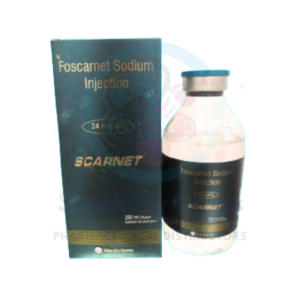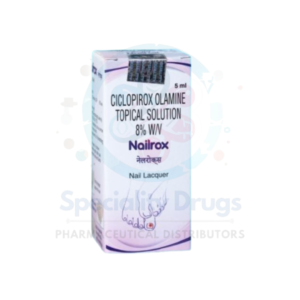What is FRASTIM?
FRASTIM is a recombinant human granulocyte colony-stimulating factor (G-CSF) injection, containing Filgrastim. It is used to stimulate the production of white blood cells (neutrophils) in patients undergoing chemotherapy, bone marrow transplantation, or those with neutropenia due to other causes.
What is the Use of FRASTIM?
- Prevents and treats neutropenia (low white blood cell count)
- Reduces risk of infections during chemotherapy or radiation therapy
- Supports bone marrow recovery after transplantation
- Helps patients maintain immune system strength during treatment
Benefits of FRASTIM
- Boosts white blood cell count effectively
- Reduces the risk of serious infections in immunocompromised patients
- Shortens hospital stays by lowering infection-related complications
- Can improve treatment outcomes in chemotherapy patients
Side Effects of FRASTIM
Common side effects:
- Bone pain or muscle aches
- Headache
- Mild fever
- Injection site reactions
Serious side effects (rare):
- Severe allergic reactions (rash, swelling, difficulty breathing)
- Spleen enlargement or rupture
- Shortness of breath or chest pain
Important Notes
- Administration: Injected subcutaneously or intravenously, usually daily or as prescribed.
- Precautions: Inform your doctor about allergies, medical conditions, or concurrent medications.
- Storage: Store in a refrigerator at 2–8°C, do not freeze, protect from light.
- Presentation: Prefilled syringe or vial containing Filgrastim.
1. What is FRASTIM used for?
It is used to prevent and treat neutropenia (low white blood cell count) in patients undergoing chemotherapy or bone marrow transplantation.
2. What is the active ingredient in FRASTIM?
The active ingredient is Filgrastim.
3. How is FRASTIM administered?
It can be administered subcutaneously or intravenously as per doctor’s instructions.
4. Can FRASTIM be self-administered at home?
Yes, with proper training and guidance from a healthcare professional.
5. What are common side effects?
Bone pain, muscle aches, headache, mild fever, or injection site reactions.
6. What serious side effects should be monitored?
Allergic reactions, spleen enlargement or rupture, shortness of breath, or chest pain.
7. Can FRASTIM be used in children?
Yes, dosing varies by age and weight; consult a pediatrician.
8. Can it be used during pregnancy or breastfeeding?
Only under medical supervision, weighing benefits vs. risks.
9. Can FRASTIM be combined with other medications?
Yes, but always inform your doctor about other medications to avoid interactions.
10. How quickly does FRASTIM increase white blood cell count?
White blood cell count typically rises within a few days of starting treatment.
11. How should FRASTIM be stored?
Store in a refrigerator at 2–8°C, do not freeze, and protect from light.
12. Can it be used in elderly patients?
Yes, but dose adjustments may be required depending on health status.
13. How long is each course of FRASTIM treatment?
Duration depends on **medi






Reviews
There are no reviews yet.